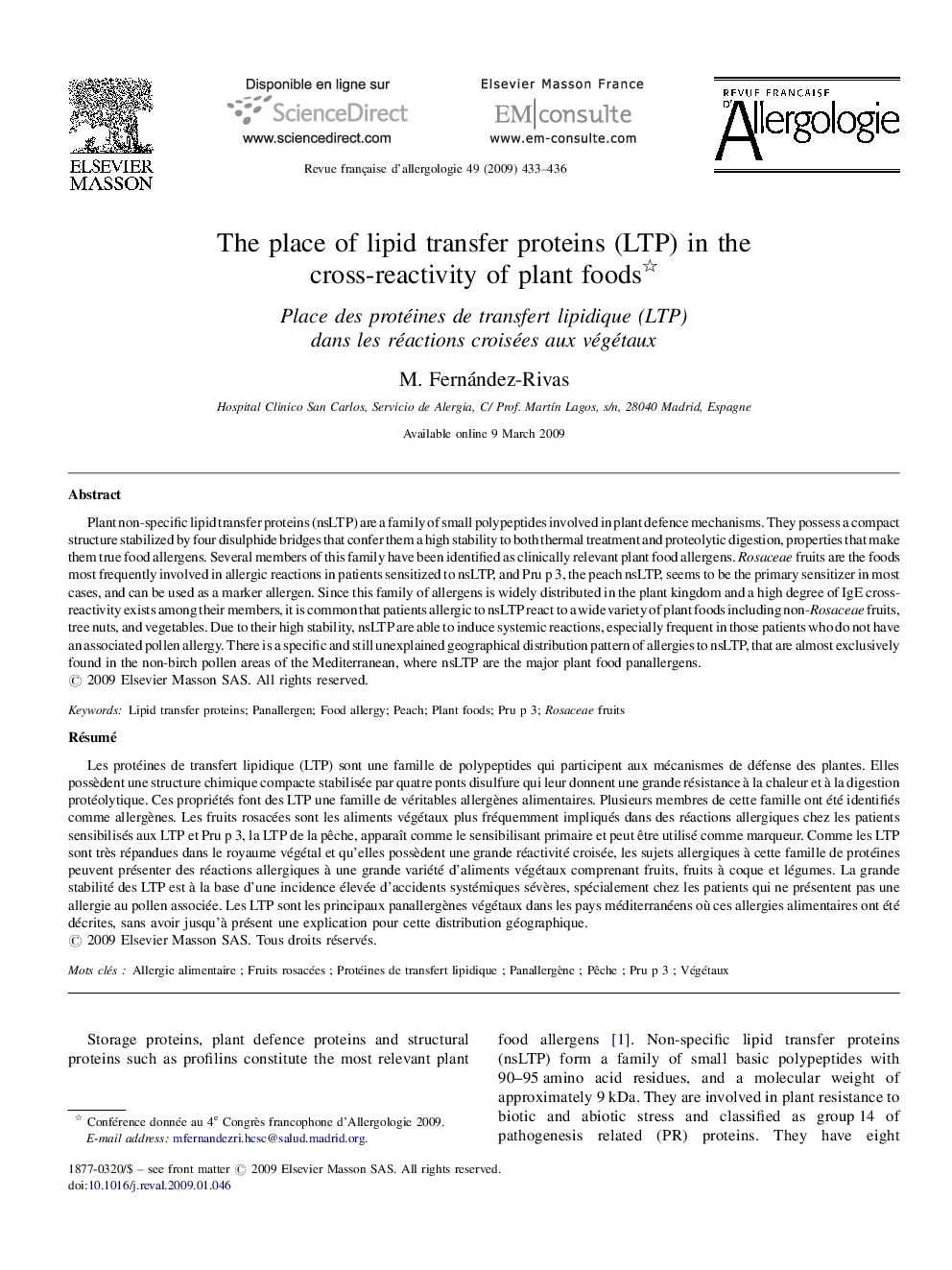| کد مقاله | کد نشریه | سال انتشار | مقاله انگلیسی | نسخه تمام متن |
|---|---|---|---|---|
| 3386877 | 1220676 | 2009 | 4 صفحه PDF | دانلود رایگان |

Plant non-specific lipid transfer proteins (nsLTP) are a family of small polypeptides involved in plant defence mechanisms. They possess a compact structure stabilized by four disulphide bridges that confer them a high stability to both thermal treatment and proteolytic digestion, properties that make them true food allergens. Several members of this family have been identified as clinically relevant plant food allergens. Rosaceae fruits are the foods most frequently involved in allergic reactions in patients sensitized to nsLTP, and Pru p 3, the peach nsLTP, seems to be the primary sensitizer in most cases, and can be used as a marker allergen. Since this family of allergens is widely distributed in the plant kingdom and a high degree of IgE cross-reactivity exists among their members, it is common that patients allergic to nsLTP react to a wide variety of plant foods including non-Rosaceae fruits, tree nuts, and vegetables. Due to their high stability, nsLTP are able to induce systemic reactions, especially frequent in those patients who do not have an associated pollen allergy. There is a specific and still unexplained geographical distribution pattern of allergies to nsLTP, that are almost exclusively found in the non-birch pollen areas of the Mediterranean, where nsLTP are the major plant food panallergens.
RésuméLes protéines de transfert lipidique (LTP) sont une famille de polypeptides qui participent aux mécanismes de défense des plantes. Elles possèdent une structure chimique compacte stabilisée par quatre ponts disulfure qui leur donnent une grande résistance à la chaleur et à la digestion protéolytique. Ces propriétés font des LTP une famille de véritables allergènes alimentaires. Plusieurs membres de cette famille ont été identifiés comme allergènes. Les fruits rosacées sont les aliments végétaux plus fréquemment impliqués dans des réactions allergiques chez les patients sensibilisés aux LTP et Pru p 3, la LTP de la pêche, apparaît comme le sensibilisant primaire et peut être utilisé comme marqueur. Comme les LTP sont très répandues dans le royaume végétal et qu’elles possèdent une grande réactivité croisée, les sujets allergiques à cette famille de protéines peuvent présenter des réactions allergiques à une grande variété d’aliments végétaux comprenant fruits, fruits à coque et légumes. La grande stabilité des LTP est à la base d’une incidence élevée d’accidents systémiques sévères, spécialement chez les patients qui ne présentent pas une allergie au pollen associée. Les LTP sont les principaux panallergènes végétaux dans les pays méditerranéens où ces allergies alimentaires ont été décrites, sans avoir jusqu’à présent une explication pour cette distribution géographique.
Journal: Revue Française d'Allergologie - Volume 49, Issue 5, September 2009, Pages 433–436